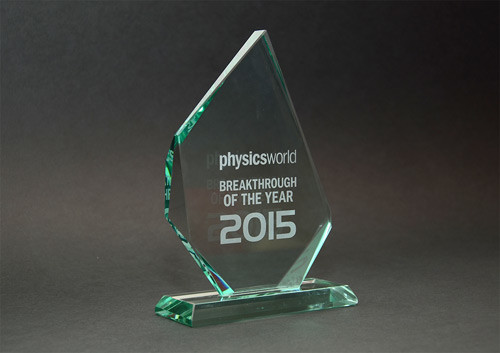Tag archives: Physics World breakthrough of the year
Live space station upgrade, more zombie physics, T-shirts for LIGO

Working in space: A still image from the NASA spacewalk video. (Courtesy: NASA)
By Hamish Johnston
NASA is live streaming a video of a spacewalk on its Facebook page, and you just might be able to catch it live from the International Space Station – or watch it again. The video shows astronauts Shane Kimbrough and Peggy Whitson upgrading the space station’s power system – and it looks like hard work to me.
View all posts by this author | View this author's profile
Waking up to a gravitational wave
By Hamish Johnston
Yesterday we announced the winner of the Physics World 2016 Breakthrough of the Year, which went to the LIGO Scientific Collaboration for its revolutionary, first ever direct observations of gravitational waves. I caught up with six LIGO scientists in the above video Hangout and asked them what it was like when they first realized that they had detected gravitational waves emanating from two coalescing black holes 1.3 billion light-years away.
View all posts by this author | View this author's profile
Commercial quantum computer works, sort of

Is it or isn’t it? The D-Wave 2X quantum processor. (Courtesy: D-Wave Systems)
By Hamish Johnston
This morning I was speaking to quantum-entanglement expert Jian-Wei Pan, who shares the Physics World Breakthrough of the Year 2015 award for his work on quantum teleportation. Pan briefly mentioned research reported earlier this week by John Martinis, Hartmut Neven and colleagues at Google Research whereby a D-Wave 2X quantum computer was used to perform a computational task 100 million times faster than a classical algorithm.
This is a remarkable result, but does it mean that D-Wave’s controversial processors actually work as quantum computers? Some quantum-computing experts are urging caution in how the research is interpreted.
Who will win the Physics World 2015 Breakthrough of the Year?

Glittering gong: who will be taking home this year’s Breakthrough of the Year award?
By Hamish Johnston
This week marks the beginning of awards season here at Physics World and we have been polishing the 2015 Breakthrough of the Year trophy in anticipation of presenting it to the winner on Friday 11 December.
The winning research must have been published in 2015 and also has to meet four criteria:
• fundamental importance of research;
• significant advance in knowledge;
• strong connection between theory and experiment; and
• general interest to all physicists.
Last year’s ESA’s Rosetta mission was our winner for the remarkable feat of landing a spacecraft on a comet while acquiring a wealth of scientific data. In 2013 the IceCube South Pole Neutrino Observatory won for making the first observations of high-energy cosmic neutrinos. But please don’t think that all the winning research is done by large collaborations. Aephraim Steinberg and colleagues from the University of Toronto were winners in 2011 for their bench-top experimental work on the fundamentals of quantum mechanics, while the inaugural prize in 2009 went to Jonathan Home and colleagues at NIST for creating the first small-scale device that could be described as a quantum computer.
We also commend nine runners-up each year who we believe deserve recognition for their contributions to physics.
So who do you think should win this year?